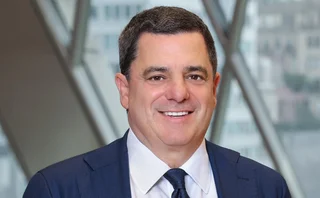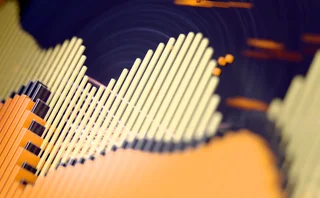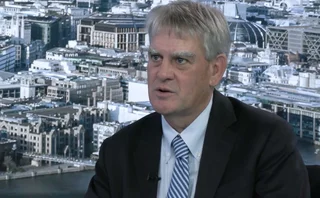
Quant investment house of the year: Transtrend
Risk Awards 2022: Commodities long shot pays off for trend follower

October 6, 2021 was the sort of day trend followers prefer to forget. Russia’s president, Vladimir Putin, gave a surprise hint that his country would end its squeeze on the supply of natural gas to Europe, and prices of the commodity dived by nearly 50%. It was a stinging reversal for trend followers that had built long positions in UK and continental European gas, the prices of which had climbed sixfold since the start of the year.
By the time of the collapse, though, one trend follower was mostly out of the trade. Transtrend, the $5 billion quant firm headquartered in Rotterdam, had reduced positions by roughly two-thirds over the previous two months – by which time markets had started “going through the roof”, according to Joost Dijkers, the firm’s head of risk management. Transtrend suffered modest losses, but covered them with gains elsewhere and ended the month 3% up.
While others in the field have added new elements to their trading programmes – such as systematic macro strategies and alternative risk premia models – or launched simpler, cheaper versions of their flagship funds, Transtrend has stuck to what it knows, though it is seeking to do it differently from other firms, and better.
Transtrend’s distinct approach to medium-term trend-following has helped it get into trends earlier and weather reversals like October’s, and to run seemingly concentrated positions without building up an excess of risk.
The firm sets no limits on the size of allocations to individual asset classes. Instead, since 2015, it has tracked what it calls the “trend risk” of positions – exposures across multiple markets that are sensitive to a common driver.
It shuns the volatility-based correlation metrics common across the industry in favour of a suite of shorter-term measures that it applies depending on market conditions.
Through the formulation and trading of combinations of instruments – which it calls “synthetic markets” and “hybrids” – Transtrend has been able to trace trends in finer detail and trade them in isolation from wider, market-dominating forces.
The firm’s success, says one client, comes down to “killer R&D. No other trend follower puts so much work into constantly improving its trading programme”.
Reflation
Last year, Transtrend capitalised on the reflation trade and avoided the worst of the fallout from reversals like October’s, returning nearly 22% and beating SG’s index of leading trend followers by more than 12 percentage points.

Harold de Boer, managing director and head of research and development at Transtrend, says the story in the markets was simple.
From November 2020, when news broke of the Pfizer vaccine’s effectiveness in clinical trials, the so-called reflation trade lifted commodities and stocks, and caused bond prices to fall. Then in June of last year, the markets turned sharply when the Delta variant spread outside India, and faltered again in late November and December with the rise of Omicron.
Transtrend took big bets in commodities. For much of the year, the firm ran more risk in the asset class than in stocks, bonds and currencies combined. And it paid off: commodities, and European energy markets in particular, contributed about two-thirds of performance overall.
Tracking trends in certain “hybrids” – combinations of assets that Transtrend began trading years earlier, specifically to pick up on inflationary drivers – helped too. Long commodity/short bond combinations grew to be among the largest positions in the portfolio in 2021 and contributed roughly a third of returns.
Concentrated bets
The ability and willingness to take what seem to be concentrated bets reflects how Transtrend sees the risks in trend following.
De Boer, who grew up on a farm in Drenthe in the north-east of the Netherlands, compares the approach to a hay fire: it starts invisibly inside a single haystack, where fermentation leads to self-heating, before the stack catches fire and the blaze spreads. The job of trend followers, he says, is to search out areas of the market – individual “haystacks” – where trends are warming up, but to scale back exposure to trends when they start to spread widely.
As a trend begins to manifest itself in multiple markets, Transtrend’s system shifts positions and moves into investments that are sensitive to other, local factors. “If there’s just one trend, you want to be sizeably in that trend early,” de Boer says. “But you don’t want to have too concentrated a bet as the trend broadens. You want to move positions as far as possible to what we’d call the outskirts of the trend.”
By tracking trends across markets, the firm is able to identify truly diversifying positions rather than simply spreading bets across asset classes.
De Boer says that, in 2021, long commodities, long equities and short bond positions were part of the same reflation trade. Notably, Transtrend’s gains during the natural gas selloff in October came not from stocks or bonds but from long positions in other commodities, chiefly US wheat.
In measuring trend risk, the firm shuns conventional correlation metrics in favour of multiple shorter-term measures updated with daily data.
De Boer believes conventional gauges of correlation break down in volatile markets because they use volatility in the denominator: “They don’t function at the exact time when you need them the most.”
That said, no mathematical construct can perfectly reflect risk as it evolves, so Transtrend takes a view on which metrics make the most sense and when. The firm’s research team determines the metrics to use depending on market conditions. “We know the strong points and weaknesses for each of them,” de Boer says.
This approach has been many years in the making. The hybrid commodity-bond combinations that helped capture the reflation trade were first added to the programme in 2013.
Transtrend creates its hybrid pairings to pick up on trends where it thinks they may form. “Well-defined synthetic markets, in which common wider market-dominating forces are ‘hedged away’, can be effective to identify and trace fresh trends close to their source,” says de Boer.
The aim is to identify fundamental drivers – something like the rise of online shopping, say. “A trend is not a price moving from A to B,” explains Joris Tolenaar, a member of Transtrend’s investor relations team. “A trend is something happening in society.”
To track the green transition, the firm follows trends in the spread between platinum and palladium. Both are extracted from the same mines, but platinum is used as a catalyst in diesel while palladium is used in petrol or gasoline engines.
By trading the spread between soybeans and corn, Transtrend neutralises the weather risk in soybean markets and creates a proxy for the demand for cattle feed.
“You can make sure that if a trend takes hold, you have the right tools to get positions in it,” Dijkers says.
Counting synthetics, Transtrend today trades more than 500 markets.
Tolenaar says it does not do this in order to predict trends, or reversals for that matter: “It’s about understanding what’s happening and choosing the right markets, the right methodologies and the right portfolio construction to be ready for when trends occur.”
Only users who have a paid subscription or are part of a corporate subscription are able to print or copy content.
To access these options, along with all other subscription benefits, please contact info@risk.net or view our subscription options here: http://subscriptions.risk.net/subscribe
You are currently unable to print this content. Please contact info@risk.net to find out more.
You are currently unable to copy this content. Please contact info@risk.net to find out more.
Copyright Infopro Digital Limited. All rights reserved.
As outlined in our terms and conditions, https://www.infopro-digital.com/terms-and-conditions/subscriptions/ (point 2.4), printing is limited to a single copy.
If you would like to purchase additional rights please email info@risk.net
Copyright Infopro Digital Limited. All rights reserved.
You may share this content using our article tools. As outlined in our terms and conditions, https://www.infopro-digital.com/terms-and-conditions/subscriptions/ (clause 2.4), an Authorised User may only make one copy of the materials for their own personal use. You must also comply with the restrictions in clause 2.5.
If you would like to purchase additional rights please email info@risk.net
More on Awards
Collateral management and optimisation product of the year: CloudMargin
Delivering the modern blueprint for enterprise collateral resilience
Flow market-maker of the year: Citadel Securities
Risk Awards 2026: No financing; no long-dated swaps? “No distractions,” says Esposito
Pricing and analytics: fixed income – Quantifi
Quantifi delivers high-performance, transparent and adaptable pricing and risk analytics for fixed income and credit markets
Derivatives house of the year: Citi
Risk Awards 2026: Rev up, RWAs down, as US bank gets back on track (with added XiNG and XiP)
Technology vendor of the year: SS&C Algorithmics
Risk Awards 2026: From cloud, to chips, to maths tricks – vendor getting more out of existing tech
SS&C Algorithmics: winner’s interview with Curt Burmeister
SS&C Algorithmics wins three categories in this year’s Markets Technology Awards in addition to Technology vendor of the year at the Risk Awards
Best vendor for system support and implementation: Murex
Murex wins Best vendor for system support and implementation at the Markets Technology Awards 2026
Pricing and analytics: cross-asset and structured – Murex
Murex wins Pricing and analytics: cross-asset and structured at the Markets Technology Awards 2026 thanks to its MX.3 platform







